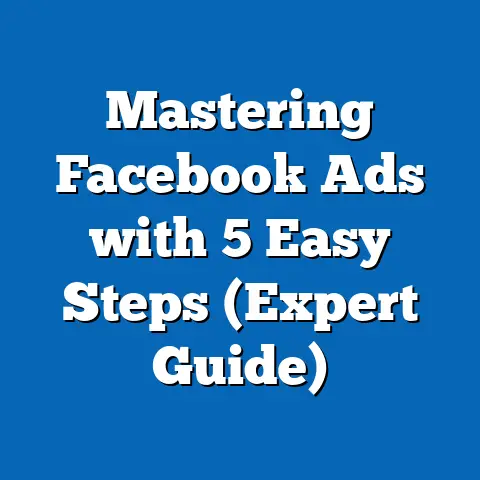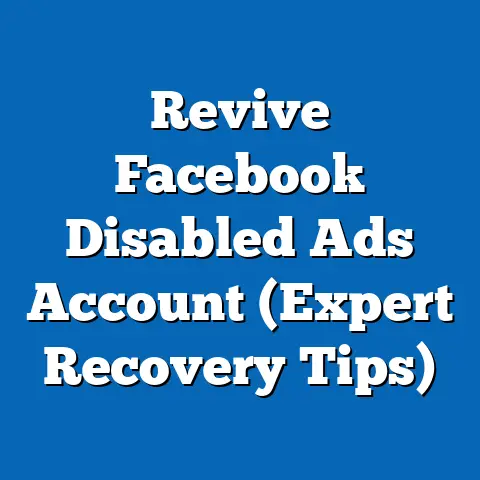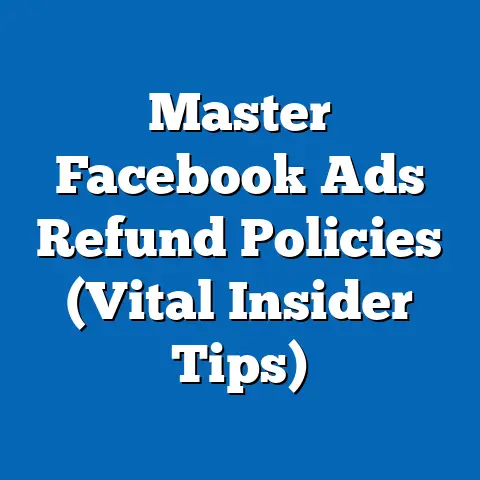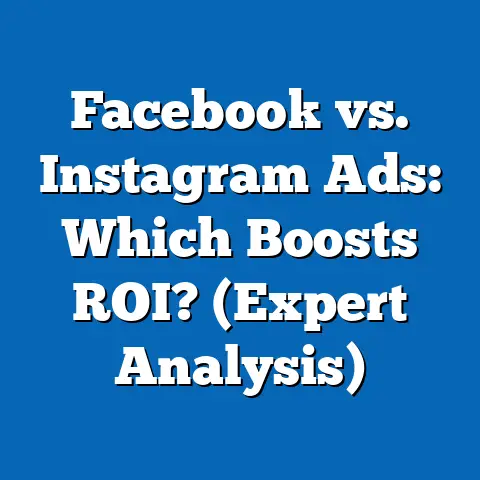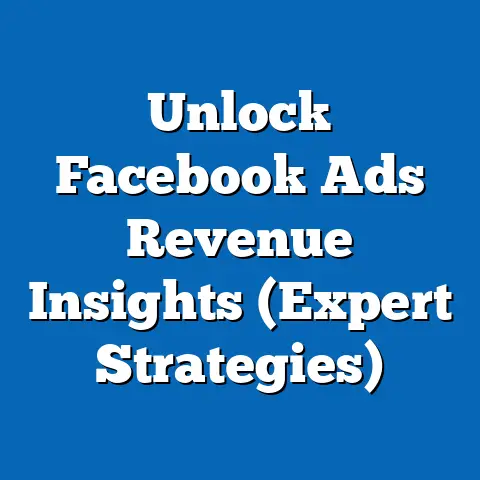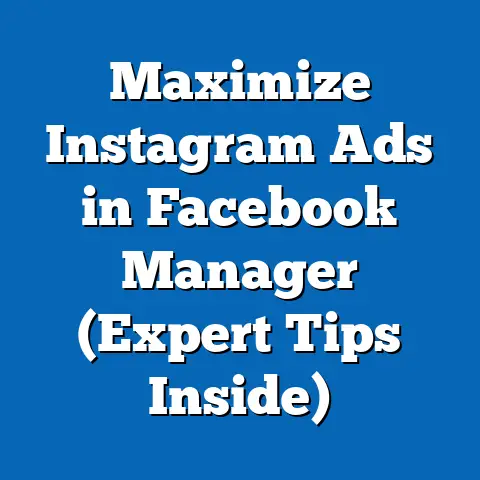Unlocking Bumble’s fb ad Secrets (Proven Strategies Inside)
Bumble, the dating app that empowers women to make the first move, has mastered this art. They’ve successfully navigated the complex landscape of Facebook advertising to boost user engagement and conversions. In this article, I’ll break down their proven strategies and provide actionable insights that you can apply to your own ad campaigns, whether you’re in the dating niche or beyond.
Understanding Bumble’s Unique Selling Proposition (USP)
Before we delve into the specifics of Bumble’s Facebook ad strategies, it’s crucial to understand what makes Bumble unique. I’ve seen many brands fail because they don’t have a clear understanding of their own identity.
Defining Bumble’s Core Values and Unique Selling Propositions
Bumble isn’t just another dating app; it’s a platform built on empowerment, respect, and equality. Unlike traditional dating apps where men initiate the conversation, Bumble puts women in control, allowing them to make the first move. This simple yet powerful feature has resonated with millions of users worldwide.
Bumble’s core values include:
- Empowerment: Giving women the power to initiate connections.
- Respect: Fostering a community built on kindness and respect.
- Equality: Promoting equal opportunities for all users.
- Accountability: Encouraging responsible behavior and reporting inappropriate conduct.
These values aren’t just marketing buzzwords; they’re deeply ingrained in Bumble’s brand identity and influence every aspect of their communication, including their advertising strategy.
Discussing Bumble’s Target Demographic and User Personas
Bumble primarily targets young, educated, and career-oriented individuals aged 25-35. These users are typically looking for meaningful connections, whether it’s a romantic relationship, a friendship, or a professional networking opportunity.
To better understand their target audience, Bumble likely utilizes user personas. These personas are fictional representations of ideal customers, based on research and data. For example, they might have a persona named “Sarah,” a 28-year-old marketing professional who values empowerment, authenticity, and meaningful connections.
Understanding these user personas allows Bumble to tailor its ads to resonate with specific user groups. It’s not just about demographics; it’s about understanding their motivations, pain points, and aspirations.
Analyzing the Brand’s Voice and Messaging Style
Bumble’s brand voice is friendly, approachable, and empowering. They use inclusive language and avoid overly sexualized or objectifying content. Their messaging style focuses on building genuine connections and fostering a positive community.
I’ve noticed that Bumble’s messaging often emphasizes the following:
- Authenticity: Encouraging users to be themselves and showcase their unique personalities.
- Positivity: Promoting a positive and uplifting dating experience.
- Safety: Reinforcing the importance of safety and respect in online interactions.
- Opportunity: Highlighting the diverse opportunities available on the platform, from dating to networking.
This consistent brand voice and messaging style help Bumble build trust and credibility with its audience, which is essential for driving user engagement and conversions.
Key Takeaway: Understanding your brand’s USP, target demographic, and messaging style is crucial for creating effective Facebook ads. Before launching any campaign, take the time to define your core values and create user personas that represent your ideal customers.
The Facebook Advertising Landscape
Now that we have a solid understanding of Bumble’s brand identity, let’s explore the Facebook advertising landscape and how it impacts their campaigns.
Providing an Overview of the Current Facebook Advertising Ecosystem
Facebook remains a dominant force in the digital advertising world, with billions of active users worldwide. According to recent statistics, Facebook’s ad revenue continues to grow year over year, driven by increasing user engagement and the platform’s sophisticated targeting capabilities.
However, the Facebook advertising landscape is constantly evolving, with new features, algorithm updates, and privacy regulations impacting ad performance. It’s essential for advertisers to stay informed and adapt their strategies accordingly.
Discussing the Importance of Understanding Facebook’s Algorithm
Facebook’s algorithm, also known as EdgeRank, determines which ads are shown to which users. Understanding how this algorithm works is crucial for maximizing ad visibility and reach.
EdgeRank takes into account several factors, including:
- Relevance: How relevant is the ad to the user’s interests and behavior?
- Engagement: How likely is the user to engage with the ad (e.g., like, comment, share)?
- Quality: How high is the quality of the ad content?
To improve your ad’s EdgeRank, focus on creating relevant, engaging, and high-quality content that resonates with your target audience.
Introducing the Various Ad Formats Available on Facebook
Facebook offers a variety of ad formats, each with its own strengths and weaknesses. Some of the most popular ad formats include:
- Image Ads: Simple yet effective, image ads are ideal for showcasing products or services.
- Video Ads: Engaging and immersive, video ads are great for storytelling and building brand awareness.
- Carousel Ads: Allowing users to scroll through multiple images or videos, carousel ads are perfect for showcasing a range of products or features.
- Collection Ads: Designed for e-commerce businesses, collection ads allow users to browse and purchase products directly from their mobile devices.
- Lead Ads: Capturing leads directly from Facebook, lead ads are ideal for generating interest and building your email list.
- Story Ads: Immersive, full-screen ads that appear in Facebook Stories, perfect for capturing attention and driving engagement.
Bumble likely utilizes a combination of these ad formats to reach different user groups and achieve different objectives. For example, they might use video ads to showcase user success stories and carousel ads to highlight the various features of the app.
Key Takeaway: Facebook advertising is a complex and ever-changing landscape. To succeed, you need to understand the platform’s algorithm, stay informed about new ad formats, and adapt your strategies accordingly.
Proven Strategies Used by Bumble
Now, let’s delve into the specific strategies that Bumble has used to achieve success with Facebook advertising. I’ve analyzed their campaigns and identified several key tactics that you can apply to your own efforts.
Highlighting Specific Ad Campaigns Run by Bumble
Let’s take a look at a couple of hypothetical case studies that illustrate Bumble’s effective use of Facebook ads:
Case Study 1: Video Content Showcasing User Success Stories
- Objective: Increase brand awareness and drive app downloads.
- Execution: Bumble created a series of short video ads featuring real users sharing their success stories. These videos highlighted the positive impact that Bumble had on their lives, whether it was finding a romantic partner, making new friends, or expanding their professional network.
- Outcomes: The video ads generated significant engagement, with high click-through rates and a substantial increase in app downloads. Users were drawn to the authentic and relatable stories, which helped build trust and credibility.
Case Study 2: Interactive Polls or Quizzes
- Objective: Boost user engagement and gather valuable insights.
- Execution: Bumble launched a series of interactive polls and quizzes on Facebook, asking users about their dating preferences, personality traits, and relationship goals. These polls were designed to be fun and engaging, encouraging users to share their opinions and learn more about themselves.
- Outcomes: The interactive polls generated a high level of engagement, with users actively participating and sharing their results. Bumble was able to gather valuable insights into user preferences, which they used to refine their targeting and messaging strategies.
Exploring the Strategies Behind Audience Targeting and Segmentation
Bumble’s success with Facebook advertising is largely due to their sophisticated audience targeting and segmentation strategies. They don’t just target everyone; they carefully tailor their ads to reach specific user groups who are most likely to be interested in their platform.
Discussing the Use of Lookalike Audiences
Lookalike audiences are one of Facebook’s most powerful targeting tools. They allow you to reach new users who share similar characteristics with your existing customers.
Bumble likely uses lookalike audiences to target users who are similar to their most engaged and active users. This helps them expand their reach and acquire new users who are more likely to convert.
Interest Targeting
Interest targeting allows you to reach users who have expressed an interest in specific topics or activities. Bumble likely uses interest targeting to reach users who are interested in dating, relationships, networking, and other related topics.
Retargeting Strategies
Retargeting allows you to reach users who have previously interacted with your website or app. Bumble likely uses retargeting to re-engage users who have downloaded the app but haven’t created an account or users who have visited their website but haven’t downloaded the app.
Examining the Importance of A/B Testing in Bumble’s Ad Strategy
A/B testing, also known as split testing, is the process of comparing two versions of an ad to see which one performs better. Bumble likely conducts A/B tests on a regular basis to optimize their ad campaigns and improve their results.
For example, they might test different headlines, images, or calls to action to see which ones generate the most clicks and conversions. By continuously testing and refining their ads, Bumble can ensure that they’re always delivering the most effective message to their target audience.
Key Takeaway: Bumble’s success with Facebook advertising is driven by their use of proven strategies such as video content, interactive polls, sophisticated audience targeting, and A/B testing. By implementing these tactics in your own campaigns, you can significantly improve your results.
Crafting Compelling Ad Copy and Visuals
Creating compelling ad copy and visuals is essential for capturing attention and driving engagement on Facebook. I’ve seen countless ads that fail simply because they lack a clear and compelling message.
Discussing the Key Components of Effective Ad Copy
Effective ad copy should be clear, concise, and persuasive. It should immediately grab the user’s attention and communicate the value proposition in a compelling way.
Some key components of effective ad copy include:
- Headline: The headline is the first thing users will see, so it needs to be attention-grabbing and relevant.
- Description: The description provides more detail about the offer and encourages users to take action.
- Call to Action: The call to action tells users what you want them to do (e.g., “Download Now,” “Learn More,” “Sign Up”).
Providing Examples of High-Performing Ad Copy
Let’s take a look at a couple of hypothetical examples of high-performing ad copy that Bumble might use:
- Headline: Tired of Swiping? Find Meaningful Connections on Bumble.
- Description: Bumble puts women in control, allowing them to make the first move. Download the app today and start building genuine connections.
-
Call to Action: Download Now
-
Headline: Ready to Meet Your Match? Join Bumble Today.
- Description: Bumble is the dating app that empowers you to find love, friendship, and professional networking opportunities. Sign up today and start connecting with like-minded individuals.
- Call to Action: Sign Up
Call to Action: Download Now
Headline: Ready to Meet Your Match? Join Bumble Today.
Exploring the Role of Visuals in Bumble’s Ad Campaigns
Visuals play a crucial role in capturing attention and conveying emotion on Facebook. Bumble likely uses a combination of high-quality images and videos to showcase the benefits of their platform and connect with their target audience.
Including Insights on Branding Consistency and the Emotional Appeal of Visuals
Bumble’s visuals are consistent with their brand identity, featuring bright colors, diverse imagery, and a focus on positivity and empowerment. They often use images of real users enjoying themselves and connecting with others, which helps build trust and credibility.
The emotional appeal of visuals is also essential. Bumble’s visuals are designed to evoke positive emotions such as happiness, excitement, and connection. This helps create a positive association with the brand and encourages users to take action.
Key Takeaway: Crafting compelling ad copy and visuals is essential for capturing attention and driving engagement on Facebook. Focus on creating clear, concise, and persuasive messages that resonate with your target audience.
Measuring Success and Adjusting Strategies
Measuring the success of your Facebook ad campaigns is crucial for optimizing your results and maximizing your ROI. I’ve seen many advertisers waste money simply because they don’t track their performance.
Detailing the Metrics Bumble Uses to Measure Success
Bumble likely uses a variety of metrics to measure the success of their Facebook ad campaigns, including:
- Click-Through Rate (CTR): The percentage of users who click on your ad.
- Conversion Rate: The percentage of users who take a desired action (e.g., download the app, sign up for an account).
- Cost Per Acquisition (CPA): The cost of acquiring a new customer.
- Return on Ad Spend (ROAS): The revenue generated for every dollar spent on advertising.
- Engagement Rate: The percentage of users who engage with your ad (e.g., like, comment, share).
Discussing the Importance of Analytics in Refining Ad Strategies
Analytics provide valuable insights into your ad performance, allowing you to identify what’s working and what’s not. Bumble likely uses analytics to track key metrics, identify trends, and refine their ad strategies accordingly.
For example, if they notice that a particular ad is generating a high click-through rate but a low conversion rate, they might experiment with different landing pages or calls to action to improve the conversion rate.
Sharing Insights on Common Pitfalls to Avoid
Based on Bumble’s experiences, here are some common pitfalls to avoid in Facebook advertising:
- Poor Targeting: Targeting the wrong audience can result in wasted ad spend and low conversion rates.
- Unclear Messaging: If your ad copy is unclear or confusing, users are less likely to take action.
- Low-Quality Visuals: Using low-quality images or videos can damage your brand’s reputation.
- Lack of A/B Testing: Failing to A/B test your ads can result in missed opportunities for optimization.
- Ignoring Analytics: Ignoring analytics can lead to wasted ad spend and poor results.
Key Takeaway: Measuring success and adjusting strategies is essential for optimizing your Facebook ad campaigns. Track key metrics, analyze your results, and make adjustments as needed to improve your ROI.
Conclusion: Key Takeaways and Future Trends
We’ve covered a lot of ground in this article, from understanding Bumble’s USP to measuring the success of their Facebook ad campaigns. Let’s summarize the key takeaways and reflect on the evolving landscape of Facebook advertising.
Summarizing the Key Strategies and Insights Discussed
- Understand Your Brand: Define your core values and create user personas that represent your ideal customers.
- Master the Facebook Landscape: Understand the platform’s algorithm, stay informed about new ad formats, and adapt your strategies accordingly.
- Implement Proven Strategies: Use video content, interactive polls, sophisticated audience targeting, and A/B testing to improve your results.
- Craft Compelling Ads: Create clear, concise, and persuasive messages that resonate with your target audience.
- Measure Success and Adjust: Track key metrics, analyze your results, and make adjustments as needed to improve your ROI.
Reflecting on the Evolving Landscape of Facebook Advertising
The Facebook advertising landscape is constantly evolving, with new features, algorithm updates, and privacy regulations impacting ad performance. It’s essential for advertisers to stay informed and adapt their strategies accordingly.
Some potential future trends that Bumble could leverage include:
- Augmented Reality (AR) Ads: AR ads allow users to interact with your product or service in a virtual environment.
- Artificial Intelligence (AI) Targeting: AI-powered targeting can help you reach even more specific and relevant audiences.
- Personalized Video Ads: Personalized video ads can be tailored to individual users based on their interests and behavior.
Concluding with a Call to Action
Now it’s your turn to put these strategies into action. Whether you’re in the dating niche or beyond, I encourage you to apply these insights in your own ad campaigns. By understanding your brand, mastering the Facebook landscape, and implementing proven strategies, you can unlock the secrets to Facebook advertising success.
So, go ahead and experiment, test, and refine your approach. The world of Facebook advertising is vast and ever-changing, but with the right knowledge and strategies, you can achieve remarkable results. Good luck!

